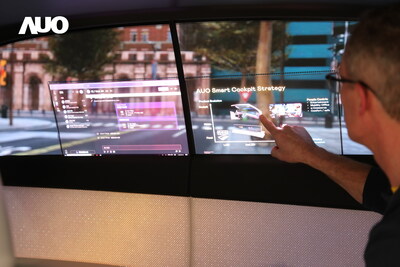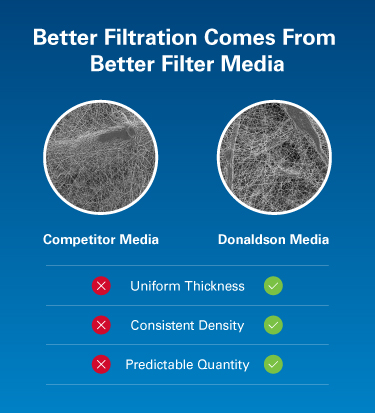
By understanding more about what is happening ahead on the road drivers can make critical decisions sooner, which in turn helps to improve road safety and relieve traffic congestion.
A driver forewarned of poor road conditions, an accident or congestion can select an alternative route – or have one suggested by an intelligent GPS system connected to the cloud. This has been made possible through HARMAN’s latest navigation system, which integrates route guidance instructions with connected safety information via a combination of embedded and cloud-based services. By using the cloud to provide network-wide machine learning capability, HARMAN now has the ability to create dynamic map layers on top of standard supplier-based maps to deliver personalized and accurate route guidance.
The car will receive real-time information about speed limits, traffic lights, dangerous road conditions and even high-risk behavior of surrounding vehicles, which can then be distributed to any driver assistance subsystem using standard based solutions such as ADASIS (Advanced Driver Assistance Systems Interface Specifications). This real-time information can even tell drivers where to find the nearest available parking.
The advanced navigation solution is fully customizable to receive all types of sensor data from the car, such as GPS, gyroscope, accelerometer, LIDAR, and camera. Using on-board map localization algorithms, HARMAN uploads relevant data from the vehicle to a backend server in the cloud, which shares the information with other connected vehicles in the vicinity.
“As every car becomes connected, the ability to leverage distributed intelligence from the Internet of Cars (IoC) becomes a reality. We’re passionate about using this increasing amount of data produced by connected vehicles and blending it with intelligent navigation to make the driving experience safer and easier,” says Phil Eyler, president HARMAN Connected Car Division.
Holistic in-car computing platform
Inside the vehicle HARMAN’s Life-Enhancing Intelligent Vehicle Solution (LIVS) brings together previously discreet or separate connectivity and operational domains under a central automotive computing platform.
“The future of driving is highly cohesive, personalized, intuitive and adaptive to drivers and passengers. The HARMAN LIVS automotive compute platform integrates all vehicle functions for a holistic and integrated approach to in-car electronics, connectivity and operations,” says Phil Eyler, President, HARMAN Connected Car.
LIVS technology can be seen – and experienced in the Rinspeed “Σtos,” which was on show at CES 2016 in Las Vegas. The Σtos suite of technologies encompassing infotainment, navigation and connected car solutions are capable of learning and anticipating the preferences of vehicle passengers. Σtos passengers communicate with the system by voice, hand gestures, physical controls or touch and/or a combination of these technologies based on each passenger’s preferences. The interior adapts seamlessly to different driving conditions.
According to the company the latest HARMAN technologies form the essential elements for the LIVS platform and make the intelligent car possible:
- Scalable computing platforms adapted individually to the needs of automakers and vehicle segments
- Modular connectivity solutions, providing high-speed networking interface for connectivity both inside and outside the car and can deliver connected services such as weather, parking and reservations
- Camera-based Advanced Driver Assistance Systems (ADAS), which monitor, record and assess the surroundings of the entire vehicle
- Intelligent learning navigation and high-resolution 3D maps for high-precision positioning systems including micro-city and micro-parking models; ADASIS e-Horizon to extend drivers range of perception beyond their range of vision using V2X technology
- Personal component configuration in the car: LIVS helps the Σtos raise the visual user experience to an unprecedented level with two curved, ultrahigh-resolution 4K 21.5-inch widescreen monitors and a central HD display that present relevant information to the driver and his or her copilots
- HARMAN 5+1 safety architecture with hypervisor and firewall protects all technologies and services, including OTA (Over the Air) update capabilities
- Complete office suite for autonomous vehicle mode, which affords the same level of productivity as a stationary office including one-touch video conferencing.
HARMAN has entered into a connected car collaboration with Microsoft, which will introduce new mobile productivity services, as well as utilize existing products, services and technologies, including cloud platforms, telematics and driver productivity. Most importantly, the collaboration will integrate key elements of Microsoft Office 365 productivity suite capabilities into HARMAN infotainment systems, according to a statement by the two companies.
This collaboration is a first for Microsoft in the connected car space. With access to relevant Office 365 services through intelligent personal assistant software drivers will be able to complete tasks such as scheduling meetings, hearing and responding to emails, automatically joining conference calls, and seamlessly managing events and tasks throughout the day. Drivers will also be able to hold Skype calls and conferences when in park or on the road with autonomous vehicles.
“Working with Microsoft is a natural fit for HARMAN as we continue our track record of making the car more sophisticated, productive and intelligent,” said Phil Eyler, president, HARMAN Connected Car. “Bringing the power of Office 365 into HARMAN’s connected car systems will provide new productivity solutions and transform the driving experience,” added Peggy Johnson, executive vice president of business development, Microsoft.
On-board cameras could help drivers to stay focused on the road while processing the information. HARMAN’s new eye and pupil tracking system measures high cognitive load and mental multitasking in the driver’s seat, and signals the car’s other safety systems to adapt to the driver’s state. “Safety on the road is more important than ever as more vehicles become connected. HARMAN is advancing solutions that balance drivers’ desire to stay connected in the car without compromising their safety and security,” says Alon Atsmon, vice president of technology strategy at HARMAN. “Our priority is to arm OEMs with a holistic range of integrated technologies that address both driver wants and needs, and the HARMAN eye and pupil tracking technology is another step toward a more intelligent driving experience.”
Adoption of in-cabin cameras is growing rapidly, enabling features such as occupant detection and driver drowsiness monitoring. By continually tracking the dilation of the driver’s pupils, the technology eliminates the need for complex sensors built into seats and steering wheels or biometric sensors that require physical contact with the driver. The data is used to intuitively adjust user interfaces, such as placing mobile devices in do-not-disturb mode or adjusting ADAS system intervention thresholds to minimize physical and mental distraction to the driver, according to HARMAN.














More Stories
AUO Returning to CES Showcase Next Generation Smart Cockpit 2025
Donaldson Ultra-Web technology aims to set the standard in industrial filtration for cleaner air and cost-savings
Hydrogen’s Role in Decarbonising Sports and Entertainment Events